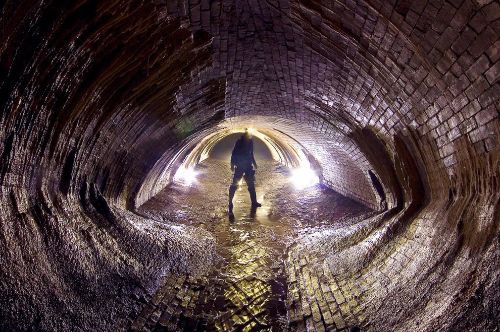Confined Space Drainage Services
Confined space drainage services and maintenance poses a significant danger for drainage workers.
Whevever possible, technology and tools are used to service confined drainage spaces in preference to sending in engineers. This is inline with current legislation and safe working practices.
When entry into confined space is unavoidable, safe practices are essential to ensure the safety and wellbeing of all personnel.
What Exactly Is Confined Space Drainage?
Confined space drainage refers to any drainage space which by design, has limited enrty and exit points and contains potential risk to anyone entering the area. Examples of these areas are:
- Storm Tanks
- Drainage Vessels and Wet Wells
- Sewer Tunnels
- Culverts
- Large Diameter Sewer Pipes
- Manholes
- Voids and Chambers
Entry into any of these areas necessitates skilled operatives and supervisors to ensure that the risk is minimised.
Exjet has developed a highly trained workforce to specialise in all aspects of confined drainage-space servicing. We have adopted the following measures to ensure the safety of our staff.
Risk Assessment
Before initiating any confined space drainage work, a thorough risk assessment is crucial. This includes identifying potential hazards related to both the confined space and the drainage system. Understanding these risks helps in developing effective safety measures.
Proper Training
Workers involved in confined space drainage receive adequate training on the specific risks associated with the task. This includes awareness of potential hazards, proper use of safety equipment, and emergency procedures.
Safety Equipment
Personal protective equipment (PPE) is essential and used for people working in confined spaces. This may include respiratory protection, harnesses, helmets, and other gear designed to mitigate the specific risks of the environment.
Ventilation
Adequate ventilation is critical in confined spaces to ensure a safe working atmosphere. Proper airflow helps to reduce the risk of exposure to harmful gases or lack of oxygen, which can be common concerns in enclosed areas.
Communication:
Establishing clear communication protocols is vital. Workers inside confined spaces should be able to communicate effectively with those outside, and there should be a reliable system for emergency communication.
Emergency Response Plan:
Having a well-defined emergency response plan is non-negotiable. This plan outlines procedures for evacuation, rescue, and first aid. All personnel involved are made familiar with the plan and participate in drills.
Monitoring:
Continuous monitoring of the confined space, including the atmosphere and potential changes in conditions, is essential. This helps in early detection of problems and allows for prompt corrective action.
Staff Safety Training & Equipment for Confined Space Drainage Services
Our staff are trained to the highest standards and an extensive range of equipment and gas monitoring systems available to us. Thus we provide our clients’ with the confined drainage-space services they need, safely and effectively.
For further information or to discuss your individual requirements please call 0800 328 6655 or email info@exjet.co.uk today to speak to a professional.

